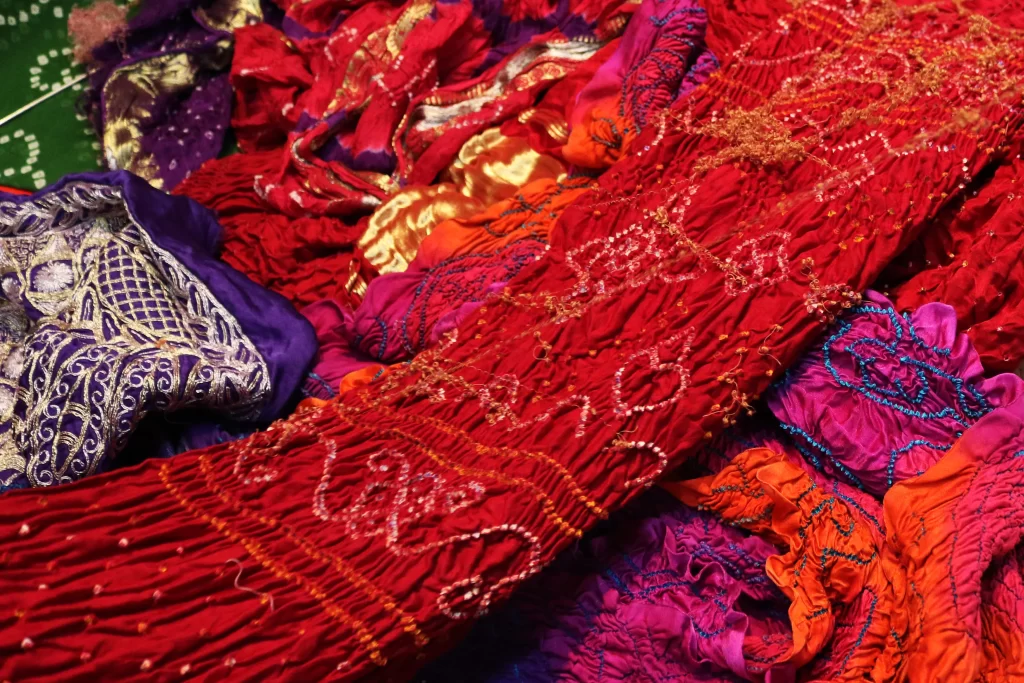The western state of Gujarat is known for being the home to the largest statue in the world — The Statue of Unity. But that’s not all that Gujarat has to offer. Gujarat is also the home to numerous artisans and craftsmen, whose regional art has taken the world by storm. One of them is Bandhani print. The craft has been practised in various regions of the world including Japan (Shibori), China, and several African countries (Adire). Bandhani is widely practised in Gujarat, Rajasthan, Sindh, Punjab, Uttar Pradesh, and Tamil Nadu, where it is known as ‘Sungudi.’
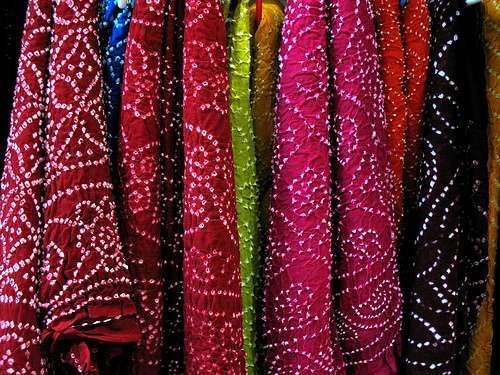
What is Bandhani Print?
The word ‘Bandhani’ or ‘Bandhej’ is derived from the Sanskrit word ‘Bandh,’ which translates to ‘tying,’ or ‘binding.’ As can be assumed, Bandhani print is essentially a tie-dye craft. In this resist dyeing process, a part of the fabric is pinched and tied. It is later dyed leaving behind exquisite dot patterns. The design of the fabric can result in simple dots, waves, rings, strips, and squares. In Tamil and regional dialects, Bandhani is referred to as ‘Bandhni,’ ‘Piliya,’ and ‘Chungidi.’ Bandhani print sarees go by several names, designated according to designs. These include ‘Khombi,’ ‘Ghar Chola,’ ‘Patori,’ ‘Chandrokhani,’ ‘Shikari,’ ‘Chowkidaar,’ and ‘Ambadaal.’
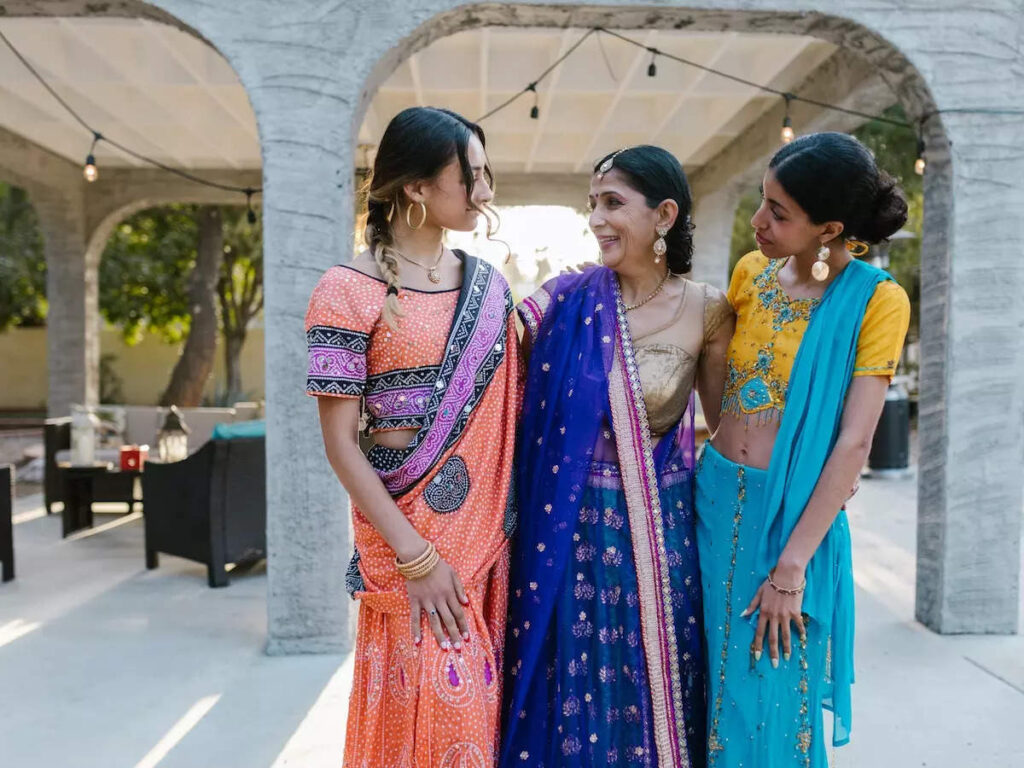
History of Bandhani Print
Bandhani print fabric can be traced back to the Indus Valley Civilization. Dyeing was a part of daily activities, having been done since 4000 BC. If you ever visit Cave 1 at Ajanta, you will easily notice the Bandhani dots in the 6th-century painting of Buddha. Bandhani print cotton sarees are also mentioned in texts of Alexander the Great’s time. Banabhatta’s ‘Harshcharita’ argues that the first Bandhani was worn during a royal marriage in the 7th century AD.

Making Tie Dye Bandhani Print
Bandhani print can be made on almost all fabrics. However, the process is extremely tedious. Each dot on the Bandhani print cotton sarees has to be hand-tied to form a pattern. Traditionally, Bandhani print silk sarees require three humble tools — a strong cotton thread (dheri), a glass pipe (bhungali), and a thimble (naklo). There are two types of dots, which can be printed. They include the more basic dots called ‘aniwali bheendi’ and an intricate dotted ring or ‘mathawali bheendi.’ The colours used are all-natural, made of ochre and the immediate flora. However, in contemporary times, synthetic colours are also being used.
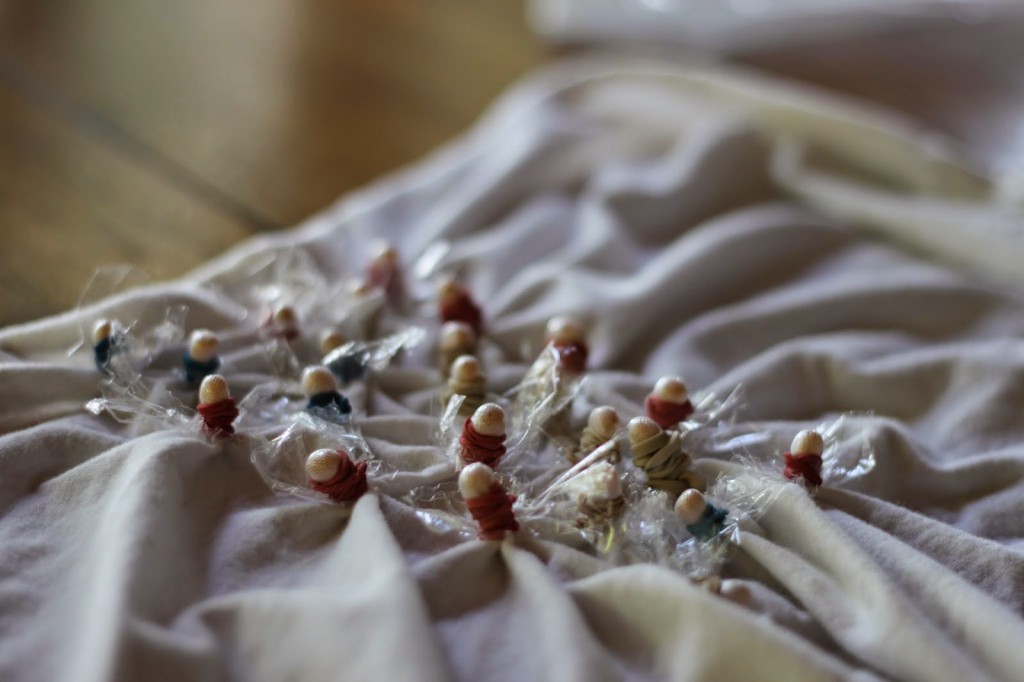
First, the fabric is washed to remove impurities and ensure an even dye. Depending on the design, the cloth is folded multiple times and then tied. Usually, the Bandhani print kurta is coloured yellow and white, with red, black, blue, and green hues also taking prominence. Once the white areas are secured, the cloth is put in a yellow (or other) dye bath. Once the required intensity is reached, it is dried. The fabric is tied yet again to secure the coloured spot. It is then placed into a stronger dye bath of the desired colour. Once done, it is dried and put through cross-grain to unravel the knots.
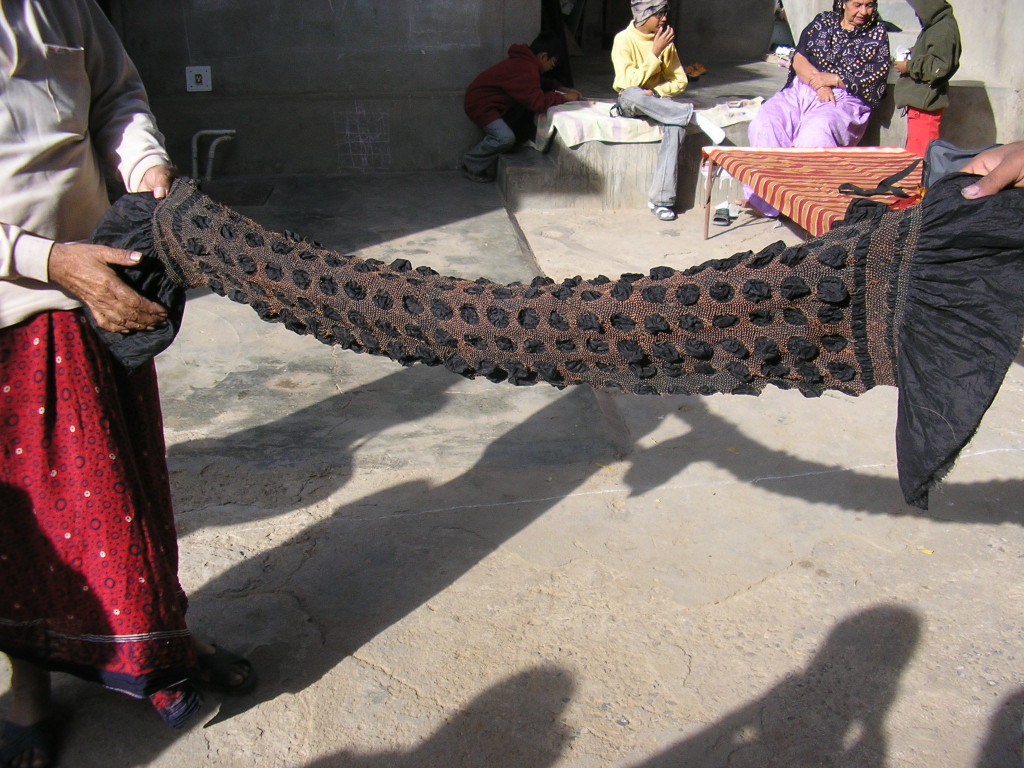
Designs in Bandhani Print Fabric
The terms ‘Ek Dali’ or ‘Bundi’ refer to a single Bandhani dot, ‘Chaubundi’ to four dots, and ‘Satbundi’ to seven dots. Teardrop-shaped dots are called ‘Kodi’, and small dots with darker centres are called ‘Boond’. The cluster pattern is referred to as ‘Trikunti’, groups of four as ‘Chaubasi’, and groups of seven as ‘Satbandi’. Bandhani dots and patterns can be repeated to create a variety of intricate designs. They consist of figurines of people, leaves, flowers, and trees. Other well-known Bandhani patterns are ‘Dungar Shahi’ (mountain pattern), ‘Laddu Jalebi’ (Indian sweets), and ‘Leheriya’ (waves).

Logistics of the Bandhani Print Saree Georgette
Depending on the size of the fabric, design, number of dots, and their types, the prices and time required to make a Bandhani print chiffon saree can vary. It is usually carried out by women of the Khatri community of Kutch and Saurashtra. A heavily patterned Bandhani print fabric can take almost six to eight months, and that is only the time taken to tie the fabric. At present, more than 25,000 artisans are committed to making good-quality Bandhani. However, they are paid extremely low, with the average earning going to INR 80 per day.
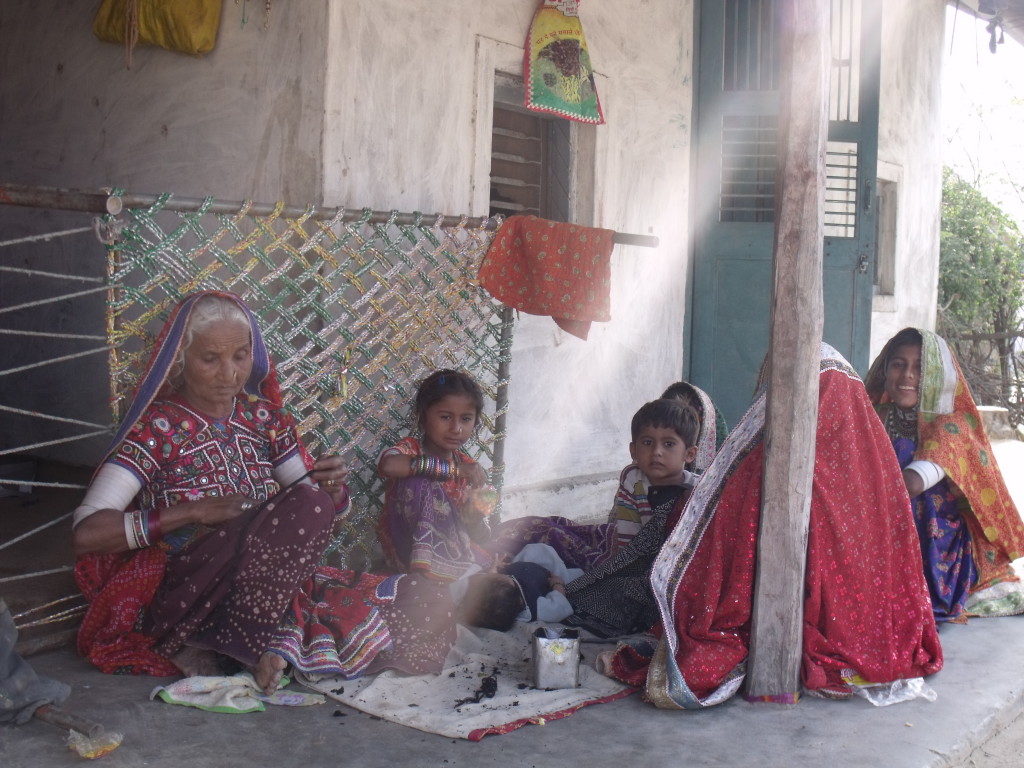
Cultural Significance of Bandhani Print
It seems like the Bandhani print fabric has finally left its mark on the global textile narrative. From the cover of Vogue India to the runways of Lakme fashion shows, the tie-dye style has perplexed and bewitched the global population. Bandhani print fabrics are considered auspicious in both Hindu and Muslim communities of Kutch. Each colour in the Bandhani has its unique significance. A red Bandhani print saree is usually worn by the bride on her wedding day. It is said to bring good luck to the newlywed. Saffron Bandhani print fabric represents an ascetic. The colour yellow symbolised joy and spring. The colours black and maroon are reserved for mourning. Newer colours included in Bandhani include turquoise, pink, beige, tangerine, indigo, purple, and more.

Image Courtesy – Media India Group

